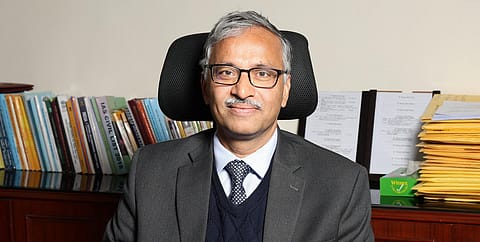Budget accounts for 17% capex growth in FY26, considering state grants: Expenditure Secy
Govil described the increase as “handsome” and said expecting an annual increment of 25%–30% in central capex—primarily a post-COVID strategy to boost the economy—is “unrealistic.”

Expenditure Secretary Manoj Govil on Monday said the allocation for capital expenditure in the Budget 2025-26 is up 17% over the revised estimate for the current financial year, factoring in both the central outlay and revenue grants to state governments for infrastructure spending. Govil described the increase as “handsome” and said expecting an annual increment of 25%–30% in central capex—primarily a post-COVID strategy to boost the economy—is “unrealistic.”
At ₹11.21 lakh crore for FY26, the budget estimate (BE) for capital expenditure is nearly flat compared to ₹11.11 lakh crore in BE FY25. Additionally, the revised estimate (RE) for FY25 has been cut by 8.34% to ₹10.18 lakh crore, highlighting poor on-ground utilisation by the ministries concerned.
However, Govil emphasised that capex growth for the next financial year is significantly higher. “There are two parts to capital expenditure. One is the direct capex by the central government, and the other is revenue grants given to state governments for infrastructure spending. If you consider both, the revised estimate for this year stands at ₹13.18 lakh crore. Next year, it will rise to ₹15.48 lakh crore, reflecting a 17% growth,” Govil told Fortune India.
“In the context of aggregate expenditure growth—around 7% between this year’s RE and next year’s BE—the 17% capital expenditure growth is quite handsome and should be appreciated. However, expecting a 25%–30% increase in capex year after year seems unrealistic,” he added.
Govil explained that capital expenditure was a post-COVID necessity. “We need to understand the historical context. The fiscal deficit was around 4.6% in the pre-COVID era. When the pandemic struck, government revenues were impacted, necessitating support for various sectors of the economy. With liberal spending, the fiscal deficit surged to 9.2% in 2020-21—the first year of the pandemic—which was neither sustainable nor in line with FRBM requirements,” he said.
“The finance minister then announced in the budget that the government would reduce the fiscal deficit to a more manageable level of 4.5% by FY26. We are on track to meet that target in the next financial year, which will enhance fiscal resilience and allow us to address any unforeseen requirements. In line with this approach, the government initially prioritised capital expenditure in the early years of the pandemic,” he said, adding that expecting a 25%–30% annual hike in infrastructure spending is unrealistic.
Govil also noted that infrastructure spending in the current financial year was affected due to elections but is expected to pick up going forward.